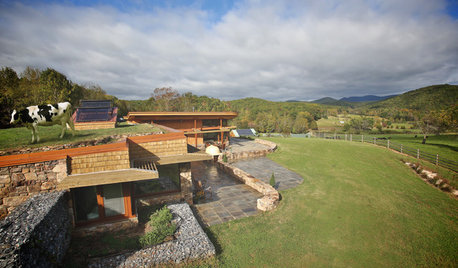Question of Self Watering Container
saoodhashim
10 years ago
Related Stories

GREEN DECORATING8 Questions to Help You See Through Green Hype
With the ecofriendly bandwagon picking up some dubious passengers, here's how to tell truly green products and services from the imposters
Full Story
KITCHEN DESIGN9 Questions to Ask When Planning a Kitchen Pantry
Avoid blunders and get the storage space and layout you need by asking these questions before you begin
Full Story
FEEL-GOOD HOMEThe Question That Can Make You Love Your Home More
Change your relationship with your house for the better by focusing on the answer to something designers often ask
Full Story
ORGANIZING4 Questions to Help You Organize Your Favorite Photos
Organize your keeper photos with a system that's just right for you, whether it's in the cloud or you can hold it in your hand
Full Story
HOUZZ TOURSHouzz Tour: A Self-Sufficient Farmhouse With a Sheep-Pasture Roof
LEED Platinum certification and a soil-covered top make this pastoral Virginia home green in more ways than one
Full Story
CONTAINER GARDENSContainer Garden Basics: How and When to Water Potted Plants
Confused about soil moisture, the best time to water and what watering device to use? This guide can help
Full Story
GREEN BUILDINGConsidering Concrete Floors? 3 Green-Minded Questions to Ask
Learn what’s in your concrete and about sustainability to make a healthy choice for your home and the earth
Full Story
REMODELING GUIDES9 Hard Questions to Ask When Shopping for Stone
Learn all about stone sizes, cracks, color issues and more so problems don't chip away at your design happiness later
Full Story
ORGANIZINGPre-Storage Checklist: 10 Questions to Ask Yourself Before You Store
Wait, stop. Do you really need to keep that item you’re about to put into storage?
Full Story
REMODELING GUIDESSurvive Your Home Remodel: 11 Must-Ask Questions
Plan ahead to keep minor hassles from turning into major headaches during an extensive renovation
Full Story







Natures_Nature
saoodhashimOriginal Author
Related Professionals
Middletown Landscape Contractors · Centereach Landscape Contractors · Kaneohe Landscape Contractors · Las Vegas Landscape Contractors · Lemay Landscape Contractors · Lemoore Landscape Contractors · Peoria Landscape Contractors · Selden Landscape Contractors · Tuscaloosa Landscape Contractors · Cerritos Solar Energy Systems · Clark Window Contractors · Eagle River Window Contractors · Fairview Shores Window Contractors · Milwaukee Window Contractors · Troy Window ContractorsNatures_Nature
rnewste
gjshawk
Ohiofem 6a/5b Southwest Ohio
Beach_bums
seysonn
saoodhashimOriginal Author
saoodhashimOriginal Author
Ohiofem 6a/5b Southwest Ohio
seysonn
mtmighty